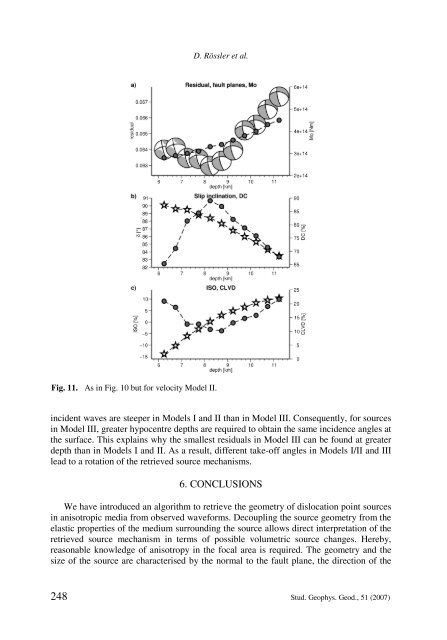Stud. Geophys. Geod., 51 (2007) - SW3D
Stud. Geophys. Geod., 51 (2007) - SW3D
Stud. Geophys. Geod., 51 (2007) - SW3D
Create successful ePaper yourself
Turn your PDF publications into a flip-book with our unique Google optimized e-Paper software.
Fig. 11. As in Fig. 10 but for velocity Model II.<br />
D. Rössler et al.<br />
incident waves are steeper in Models I and II than in Model III. Consequently, for sources<br />
in Model III, greater hypocentre depths are required to obtain the same incidence angles at<br />
the surface. This explains why the smallest residuals in Model III can be found at greater<br />
depth than in Models I and II. As a result, different take-off angles in Models I/II and III<br />
lead to a rotation of the retrieved source mechanisms.<br />
6. CONCLUSIONS<br />
We have introduced an algorithm to retrieve the geometry of dislocation point sources<br />
in anisotropic media from observed waveforms. Decoupling the source geometry from the<br />
elastic properties of the medium surrounding the source allows direct interpretation of the<br />
retrieved source mechanism in terms of possible volumetric source changes. Hereby,<br />
reasonable knowledge of anisotropy in the focal area is required. The geometry and the<br />
size of the source are characterised by the normal to the fault plane, the direction of the<br />
248 <strong>Stud</strong>. <strong>Geophys</strong>. <strong>Geod</strong>., <strong>51</strong> (<strong>2007</strong>)


